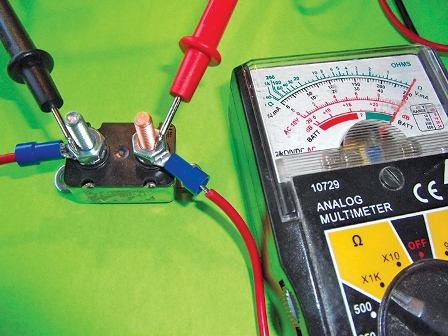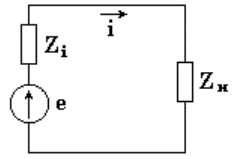Coordinated mode of operation of the electrical circuit, matching of source and load
The topic of this article will be the general illumination of the modes of operation of the electrical network in conditions of matching of the source and the load. What are these conditions and when and why are they needed? The corresponding mode (in terms of power) deserves special attention, but we will consider, among other things, other relevant modes.

The coordinated mode, in a general sense, is such a mode of operation of an electric circuit, when the maximum power that this source can give in its current state is distributed to the load connected to a given source.
The condition under which this mode occurs is the equality of the load resistance internal resistance of the source for DC circuits, or the equality of the internal source impedance to the complex load impedance for AC circuits.

It is obvious that for real power sources with a certain limited internal resistance, it is true that as the resistance of the load starting from zero increases, the power released on it first increases non-linearly, then the peak of the power released at the load (for a given source) is reached, and with a further increase in the load resistance, the power distributed to it decreases non-linearly, approaching zero.
This is due to the fact that the source current is related not only to the load resistance R, but also to the self-resistance of the source r:

One way or another, to match the load and the source, just such a ratio is chosen between the internal resistance of the source and the resistance of the load circuit that the resulting system exhibits exactly the properties that are required of it for a particular task. For this reason, there are several options for matching the load and the source, and let's honestly note the main ones: by voltage, by current, by power, by characteristic impedance.
Appropriate load and voltage source
To obtain the maximum voltage across the load, its resistance is chosen to be much greater than the internal resistance of the source. That is, in the limits, the source must work under load, but at the same time in idle mode, then the voltage in the load will be equal to the emf of the source. Such matching is used in particular in electronic systems where the voltage serves as an information carrier, a signal carrier, and it is necessary that the loss during the transmission of this signal be minimal.

Matching the load and current source
When it is necessary to obtain the maximum load current, the load resistance is chosen as small as possible, much less than the internal resistance of the source. That is, the source operates in short-circuit mode and a current equal to the short-circuit current flows through the load.
This solution is used in particular in electronic circuits where the signal carrier is current. For example, a high-speed photodiode transmits a current signal, which is then converted to the required voltage level. Low input impedance solves the problem of bandwidth narrowing due to RC spurious filter.

Power matching of load and source (matching mode)
At the load, the maximum power that the source can provide is obtained. The load resistance is equal to the internal resistance of the source (impedance). The power distributed in this load mode is determined by the formula:

Load and source matching by characteristic impedance
In long line theory and in microwave technology this is a particularly important type of coincidence. Characteristic impedance matching yields the maximum traveling wave factor in the transmission line, which is identical, over long lines, to power matching in conventional AC circuits.
When matched in terms of characteristic impedance, the characteristic impedance of the load must equal the internal impedance of the wave source. Wave impedance matching is used everywhere in microwave technology.

By the way, in terms of alternative energy in the near future, when power source has individual characteristics that are very different from the traditional ones, first of all it is necessary to ensure a coordinated mode of operation of the source and receiver by making a receiver that matches its characteristics with a given source, and only then to convert the received energy in a form acceptable to the load.
